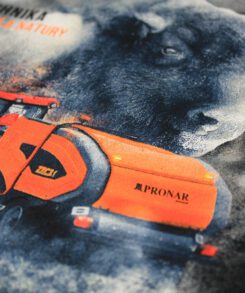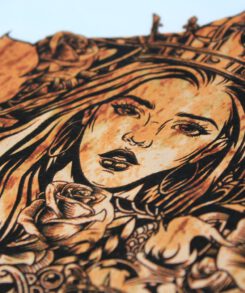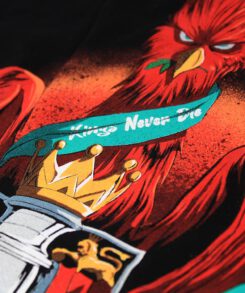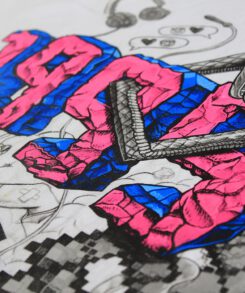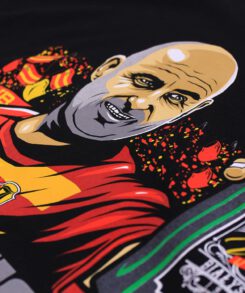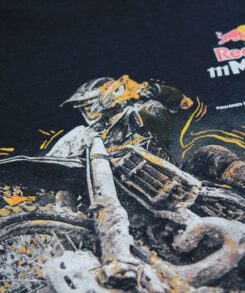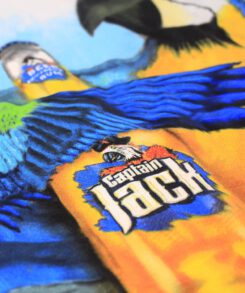Screen printing
Screen printing is the most popular technique of making prints on clothing and other textiles. The printing technique consists of squeezing paint through a form on a specially prepared matrix commonly called a screen.
The screen is covered with an emulsion on which the printed image is reproduced. The ink is pressed through those areas of the screen that are not covered with emulsion. The resulting design is transferred directly to the object or paper/foil depending on the screen printing technique.
Technological film - screen printing on clothing
Example realizations:
Key Features
01 - Durability
02 - Colors
03 - Economy
04 - Positioning
05 - Price
06 - Preparation
07 - Paints
08 - Graphic files
How to order?
- Send us ideas and designs for your printed garments – if you don’t have them we will design them for you.
- Include in your email all the information you have about the project: Include graphics or logos for imprinting.
- After receiving approval of the valuation, we will proceed with the visualization of the project.
- We will show you what your final garment will look like.
- If you confirm it we will start the production process.
- If you need you can get a photo of the first reprint for review.
- Your garment is now manufactured, complete and packed.
- We send it by courier to the indicated address. If you wish the shipment is anonymous.
- You can enjoy a unique and personalized clothing collection.
Why should you work with us?
Simply put, screen printing is one of many printing techniques. It might seem like a modern invention, but it has been used in the Far East for thousands of years. It is known especially in Japan, where kimonos were decorated with screen printing. What exactly screen printing is and where it is used you will read in the further part of this article.
Screen printing - printing with a square frame
Screen printing - where can it be used?
A wide range of screen printing purposes makes it a universal marking technique. Printing made with this technique is durable and resistant to UV radiation and moisture. It does not wash off and at the same time is not vulnerable to mechanical damage. Colors are vivid and saturated. Price is also not without significance. Screen printing is one of the cheapest printing methods available on the market. It pays off both for single orders as well as wholesale ones.





